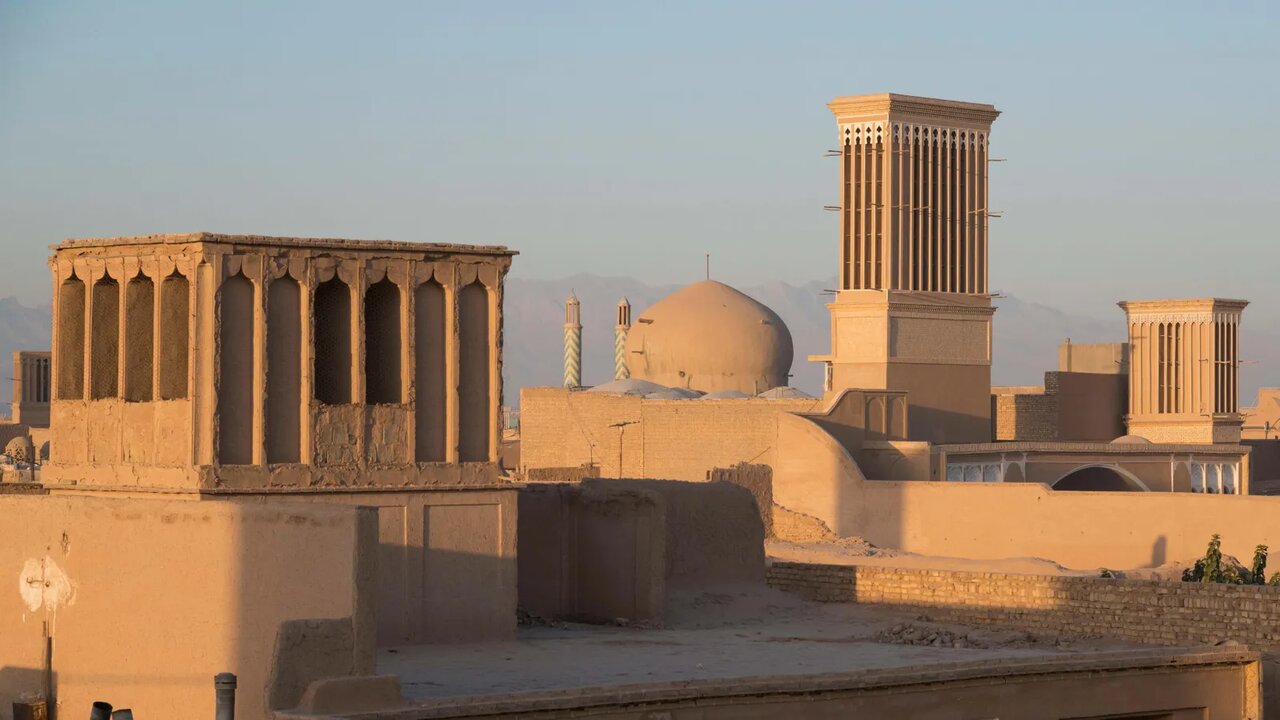Windcatcher: ancient Iranian cooling tech on the way to U.S.

TEHRAN —As the United States grapples with a growing urgency of climate change and urban heat, it may turn to the ancient wisdom of Iran’s windcatchers for inspiration.
Many homes in Iran still enjoy that simple but effective cooling device, which requires no electricity and dates back centuries.
Experts say while those wind towers, also known as “badgirs” were designed for traditional architecture, modern adaptations can integrate this technology seamlessly into contemporary urban landscapes.
This way, architects and engineers may grasp that cultural heritage as an opportunity to incorporate wind towers into their designs of skyscrapers, office buildings, and residential complexes.
By doing so, they not only lower cooling costs but also enhance the cultural richness and authenticity of urban environments.
For instance, Austria Pavilion at Expo 2020 Dubai was inspired by historical wind towers to create a multi-sensorial building composed of 38 intersecting cones of different heights.
In a recent story published by TIME, the renowned New York-based magazine portrayed how versions of these windcatcher systems, which work without ever requiring electricity, can even be used in high rises in America.
TIME’s article titled “The U.S. Should Ditch AC and Use Middle Eastern Techniques to Cool Its Cities”, comes when heat waves break records across the globe with the escalating challenges of climate change.
Ancient Iranians developed wind towers as a way to naturally cool their buildings, even in scorching desert climates.To lay out some details, the article represents several clever ideas on how that ancient expertise offers a viable, sustainable solution to cooling cities and mitigating the impact of extreme heat.
According to John Onyango, a professor at the University of the Notre Dame School of Architecture, in hot climates around the world, people have engineered sustainable buildings to withstand extreme heat for hundreds of years.
“In the U.S. we’ve been so used to feeding on cheap energy that we forgot to innovate,” says Onyango. “We have many techniques we can use to reduce heat, and we can actually borrow from what happens in the Middle East (West Asia) and look at Iran or look at Dubai and Turkey.”
Moreover, Onyango points to a four-story building that serves as Siemens’s Middle Eastern headquarters in Abu Dhabi’s Masdar City, which was designed to cool itself without the use of air conditioning, preventing overheating in the hot desert climate.
It was one of the first buildings in the region to receive a LEED platinum certification from the U.S. Green Buildings Council, meaning it is among the most sustainable buildings on the planet. It works without ever requiring electricity. Versions of these windcatcher systems can even be used in high rises, according to Onyango.
In towering buildings, wind can be funneled through chimney-like structures called chases, says Onyango. The air flowing through the chases is then cooled by the mass of the walls and then brought back into the building.
Amin Al-Habaibeh, who is a professor at the School of Architecture Design and the Built Environment at Nottingham Trent University, believes that another way to significantly improve the ability of a building to cool itself is to use high domed-shaped roofs. “The advantage of having a dome structure is that part of the building will be in the sun, but the other side of the building will be in the shadow,” says Al-Habaibeh.
“These environmentally friendly materials would absorb moisture during the night and evaporate during the day creating a sort of natural cooling effect,” he says.
Furthermore, Onyango believes that, unlike the production process for steel or concrete, the production of stone and mud bricks does not lead to large amounts of carbon emissions. In the U.S. these materials could be used as filler material to help pad the underlying structure of walls.

Wind tower standing over 33 meters in Dolatabad garden located in the oasis city of Yazd in the heart of Iran.
Today, more Americans rely on air conditioning than ever before. About 88% of all households in the country use an air conditioner, which has become essential for comfort and health as temperatures rise. This compared with 77% of households with AC in 2001.
But air conditioning has both environmental and socioeconomic consequences. Air conditioning is thought to cause 1,950 million tons of CO2 emissions each year worldwide, accounting for nearly 4% of global carbon emissions. It also increases electricity bills, leaving some low-income people more likely to have to go to the emergency room due to extreme heat.
Some experts believe that all of these construction methods are still unpopular in the United States due to a combination of a lack of skilled workers to source natural materials and the reluctance of property developers. However, it is evident that as temperatures rise, American cities will have to change.
An ancient wisdom
Ancient Iranians developed wind towers as a way to naturally cool their buildings, even in scorching desert climates. These towers, a marvel of architectural innovation, harness the power of the wind to create a natural means of ventilation and keep interiors cool.
How do wind towers work?
Imagine a cylindrical tower, elegantly adorned with decorative patterns and placed on a rooftop. That chimney-like structure captures the wind blowing from above to the ground and transmits it to the house below. This displaces hot air being ejected from the opposite side of the vent.
In some designs, the incoming air blows over the water, which is flowing beneath the structure, providing additional cooling, which can reduce the temperature inside a building from 8C to 12C. Even when there is no breeze at all, a wind tower acts like a high chimney that lets warm air passes through, drawing cooler air into the building from the other side.
AFM
Leave a Comment